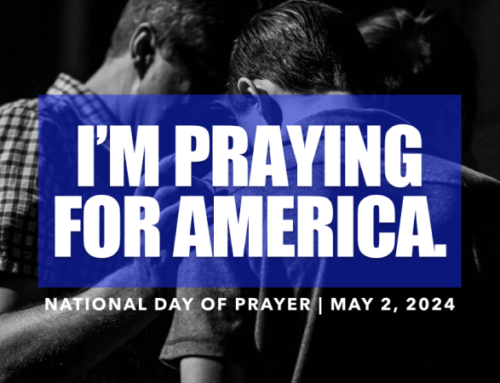Alleged Discrepancies
Part 5 in a series
The articles contained in part 5 are:
Did God Create Animals or Man First?
Where Are You From?
Did God Create Animals or Man First?
After reading the first two chapters of the Bible, some skeptics, in an attempt to disprove the Bible’s inerrancy, have accused the writer of Genesis of erring in regard to the record of events occurring on day six of creation. While Genesis 1:24-27 plainly indicates that man was created after the animals, critics claim that Genesis 2:18-19 teaches that man was created before animals. They strongly assert that such language by the author of Genesis proves that the Bible is not divinely inspired.
Does Genesis two present a different creation order than Genesis one? Is there a reasonable explanation for the differences between the two chapters? Or is this to be recognized as a genuine contradiction?
Some Bible students resolve this alleged contradiction simply by explaining that the Hebrew verb translated “formed” could easily have been translated “had formed.” In his Exposition of Genesis, H.C. Leupold stated:
Without any emphasis on the sequence of acts the account here records the making of the various creatures and the bringing of them to man. That in reality they had been made prior to the creation of man is so entirely apparent from chapter one as not to require explanation. But the reminder that God had “molded” them makes obvious His power to bring them to man and so is quite appropriately mentioned here. It would not, in our estimation, be wrong to translate yatsar as a pluperfect in this instance: “He had molded.” The insistence of the critics upon a plain past is partly the result of the attempt to make chapters one and two clash at as many points as possible (1942, p. 130, emp. added).
Hebrew scholar Victor Hamilton agreed with Leupold’s assessment of Genesis 2:19 as he also recognized that “it is possible to translate formed as ‘had formed’ ” (1990, p. 176). Keil and Delitzsch stated in the first volume of their highly regarded Old Testament commentary that “our modern style for expressing the same thought [which the Holy Spirit, via Moses, intended to communicate—EL] would be simply this: ‘God brought to Adam the beasts which He had formed’ ” (1996, emp. added). Adding even more credence to this interpretation is the fact that the New International Version (NIV) renders the verb in verse 19, not as simple past tense, but as a pluperfect: “Now the Lord God had formed out of the ground all the beasts of the field and all the birds of the air” (emp. added). Although Genesis chapters one and two agree even when yatsar is translated simply “formed” (as we will notice in the remainder of this article), it is important to note that the four Hebrew scholars mentioned above and the translators of the NIV, all believe that it could (or should) be rendered “had formed.” And, as Leupold acknowledged, those who deny this possibility do so (at least partly) because of their insistence on making the two chapters disagree.
The main reason that skeptics do not see harmony in the events recorded in the first two chapters of the Bible is because they fail to realize that Genesis 1 and 2 serve different purposes. Chapter one (including 2:1-4) focuses on the order of the creation events; chapter two (actually 2:5-25) simply provides more detailed information about some of the events mentioned in chapter one. Chapter two never was meant to be a chronological regurgitation of chapter one, but instead serves its own unique purpose—i.e., to develop in detail the more important features of the creation account, especially the creation of man and his surroundings. As Kenneth Kitchen noted in his book, Ancient Orient and the Old Testament:
Genesis 1 mentions the creation of man as the last of a series, and without any details, whereas in Genesis 2 man is the center of interest and more specific details are given about him and his setting. Failure to recognize the complimentary nature of the subject—distinction between a skeleton outline of all creation on the one hand, and the concentration in detail on man and his immediate environment on the other, borders on obscurantism (1966, p. 117).
Norman Geisler and Thomas Howe summarized some of the differences in Genesis 1-2 in the following chart (1992, p. 35):
| Genesis 1 | Genesis 2 | |
| Chronological Order | Topical Order | |
| Outline | Details | |
| Creating Animals | Naming Animals |
The fact is, “Genesis 2 does not present a creation account at all but presupposes the completion of God’s work of creation as set forth in chapter 1…. [C]hapter 2 is built on the foundation of chapter 1 and represents no different tradition than the first chapter or discrepant account of the order of creation” (Archer, 1982, pp. 68-69). In short, Genesis chapters 1 and 2 are harmonious in every way. What may seem as a contradiction at first glance is essentially a more detailed account of chapter one. The text of Genesis 2:19 says nothing about the relative origins of man and beast in terms of chronology, but merely suggests that the animals were formed before being brought to man.
If one still rejects both the possibility of yatsar being translated “had formed,” and the explanation of the two chapters being worded differently because of the purposes they serve, a final response to the skeptics allegations is that the text never says that there were no animals created on the sixth day of creation after Adam. Although in my judgment it is very unlikely that God created a special group of animals to be named by Adam (after creating all others before the creation of man—Genesis 1:20-27), some commentators hold this view. After his comments concerning the translation of yastsar, Victor Hamilton indicated that the creatures mentioned in 2:19 refer “to the creation of a special group of animals brought before Adam for naming” (p. 176, emp. added). Hamilton believes that most all the animals on the Earth were created before Adam; however, those mentioned in 2:19 were created on day six after Adam for the purpose of being named. In U. Cassuto’s comments on Genesis 2 regarding the time Adam named the animals, he stated: “Of all the species of beasts and flying creatures that had been created and had spread over the face of the earth and the firmament of the heavens, the Lord God now formed particular specimens for the purpose of presenting them all before man in the midst of the Garden” (1961, p. 129, emp. added). Both of these long-time Bible students recognize that the text never says there were no animals created after Adam, but that all animals were created either on days five and six (before and possibly even after Adam was created). However unorthodox (or unlikely) this position may be, it does serve as another reason why skeptics have no foundation upon which to stand when they assert that a contradiction exists between Genesis 1:24-27 and 2:19.
REFERENCES
Archer, Gleason L. (1982), An Encyclopedia of Bible Difficulties (Grand Rapids, MI: Zondervan).
Cassuto, U. (1961), A Commentary on the Book of Genesis (Jerusalem: Magnes).
Geisler, Norman L. and Thomas A. Howe (1992), When Critics Ask (Wheaton, IL: Victor Books).
Hamilton, Victor P. (1990), The Book of Genesis (Grand Rapids, MI: Eerdmans).
Keil, C.F. and F. Delitzsch (1996), Keil and Delitzsch Commentary on the Old Testament (Electronic Database: Biblesoft), new updated edition.
Kitchen, Kenneth (1966), Ancient Orient and Old Testament (Chicago, IL: Inter-Varsity Press).
Leupold, Herbert C. (1942), Exposition of Genesis (Grand Rapids, MI: Baker).
Copyright © 2002 Apologetics Press, Inc. All rights reserved.
We are happy to grant permission for items in the “Alleged Discrepancies” section to be reproduced in their entirety, as long as the following stipulations are observed: (1) Apologetics Press must be designated as the original publisher; (2) the specific Apologetics Press Web site URL must be noted; (3) the author’s name must remain attached to the materials; (4) any references, footnotes, or endnotes that accompany the article must be included with any written reproduction of the article; (5) alterations of any kind are strictly forbidden (e.g., photographs, charts, graphics, quotations, etc. must be reproduced exactly as they appear in the original); (6) serialization of written material (e.g., running an article in several parts) is permitted, as long as the whole of the material is made available, without editing, in a reasonable length of time; (7) articles, in whole or in part, may not be offered for sale or included in items offered for sale; and (8) articles may be reproduced in electronic form for posting on Web sites pending they are not edited or altered from their original content and that credit is given to Apologetics Press, including the web location from which the articles were taken.
For catalog, samples, or further information, contact:
Apologetics Press
230 Landmark Drive
Montgomery, Alabama 36117
U.S.A.
Phone (334) 272-8558(334) 272-8558
Where Are You From?
Although it sounds like an easy question, for a growing number of people it is becoming more and more difficult to answer: Where are you from? Ask the eighteen-year-old college freshmen who grew up in a military family where she is from, and you likely will hear her rattle off five or six different states (and perhaps even a few countries!). Ask the son of a Major League baseball player (who has played for eight different teams in his twenty-year career) where he is from, and you might hear him respond by saying, “I was reared in a lot of places.” Ask a preacher’s kid where he was reared, and you likely will hear the same response.
It seems like the longer I live, the more problems I have telling people “where I’m from.” I was born in Macon, Georgia, then lived in Tennessee for five years, back to Georgia for two, in Oklahoma for the next twelve, and then back to Tennessee (in three different cities) for the next six years. I now live in Alabama. Today, when someone asks me, “Where are you from?,” I must confess that I sometimes do not know what to say. “The last move I made was from Tennessee. I spent most of my “growing-up years” in Oklahoma. I was born in Georgia….” Where am I from? Take your pick.
Some critics actually think they have a legitimate Bible contradiction on their hands by pointing out that different passages sometimes speak of the same person being from two (or more) different places. For example, in Mark 1:21-29 Simon (Peter) and his brother Andrew are said to have lived in (or very near) Capernaum. The apostle John, on the other hand, recorded that “the city of Andrew and Peter” was Bethsaida (1:44). Are these two accounts contradictory? No. Peter and Andrew were living in Capernaum at the beginning of Jesus ministry, however, they were known as being “of” Bethsaida, which is probably where they first learned a trade, got married, and made a name for themselves. The writers are simply referring to two different times in the lives of Peter and Andrew.
A similar “controversy” surrounds whence Jesus came. Well-known skeptic Dennis McKinsey had the audacity to ask, “Why would Jesus be called ‘Jesus of Nazareth’ when He was born in Bethlehem of Judea” (2000, p. 133). Obviously, Mr. McKinsey is not willing to give the Bible writers the same freedom we have today when we talk about our “ hometown” and our “birthplace.” The fact is, Jesus was born in Bethlehem (Matthew 2:1), but grew up in Nazareth (Matthew 2:23; cf. Acts 22:8).
Remember, for something to be a legitimate contradiction, the same person, place, or thing must be under consideration at the same time in the same sense. If not, then it is impossible to know that two things are contradictory.
REFERENCE
McKinsey, C. Dennis (2000), Biblical Errancy (Amherst, NY: Prometheus).
We are happy to grant permission for items in the “Alleged Discrepancies” section to be reproduced in their entirety, as long as the following stipulations are observed: (1) Apologetics Press must be designated as the original publisher; (2) the specific Apologetics Press Web site URL must be noted; (3) the author’s name must remain attached to the materials; (4) any references, footnotes, or endnotes that accompany the article must be included with any written reproduction of the article; (5) alterations of any kind are strictly forbidden (e.g., photographs, charts, graphics, quotations, etc. must be reproduced exactly as they appear in the original); (6) serialization of written material (e.g., running an article in several parts) is permitted, as long as the whole of the material is made available, without editing, in a reasonable length of time; (7) articles, in whole or in part, may not be offered for sale or included in items offered for sale; and (8) articles may be reproduced in electronic form for posting on Web sites pending they are not edited or altered from their original content and that credit is given to Apologetics Press, including the web location from which the articles were taken.
For catalog, samples, or further information, contact:
Apologetics Press
230 Landmark Drive
Montgomery, Alabama 36117
U.S.A.
Phone (334) 272-8558(334) 272-8558
http://www.apologeticspress.org










Leave a Reply, please --- thank you.